10 Common Christmas Cactus Problems (+ Fixes)
Christmas cacti bloom with neon flower buds in mid-December, bringing colorful flowers to the holiday season. Though they are considered somewhat easy to grow, several common Christmas cactus problems can sneak up on your plant!
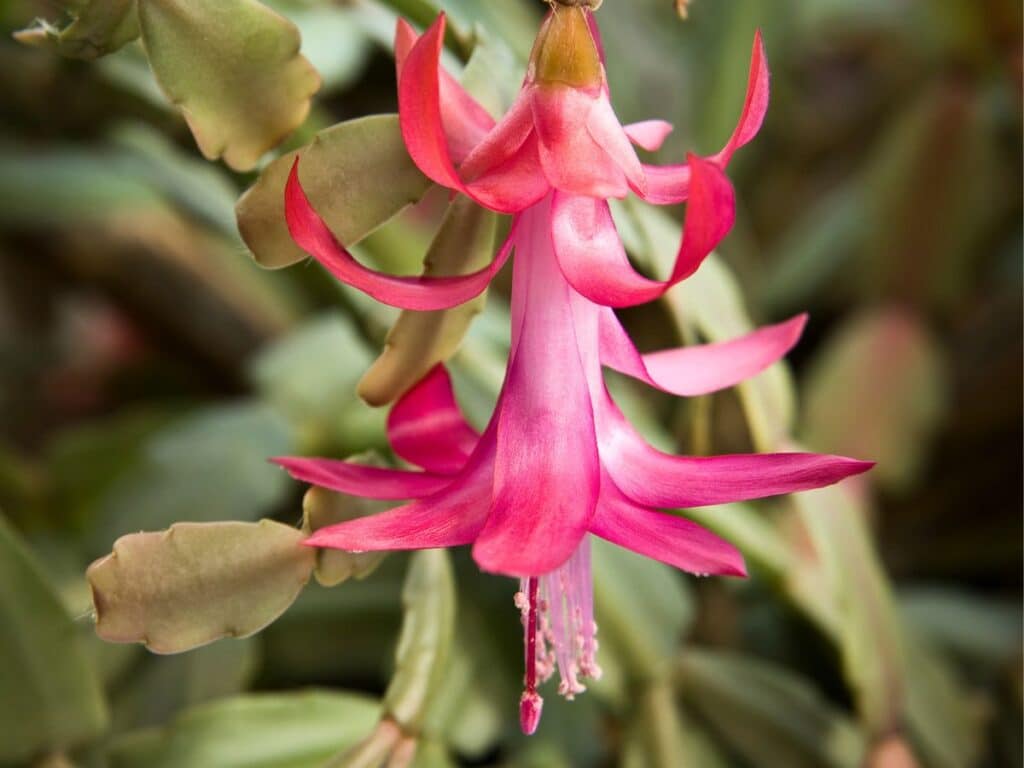
These problems can pop up when the plant has received less than ideal care.
Rot, fungus gnats, purple leaves, droopy foliage, and flowers that drop before blooming are just a few of the problems that can plague these gorgeous houseplants.
These problems aren’t specific to Christmas cacti alone; Thanksgiving cacti can also succumb to health problems. Proper preventative care throughout the growing season is essential for preventing disease in both holiday cacti, but sometimes problems occur even when we do our best!
Let’s dive into the nine most common health issues facing Christmas cactus plants- and what you can do to encourage plant recovery and health!
Hi there! If we haven’t met, my name is Jamie. I’m a lifelong plant enthusiast with a degree in environmental tech. I love the surprising beauty of these holiday flowers and have devoted myself to studying + understanding their quirks.
This post contains affiliate links. See our privacy policy here.
1. Drooping And Mushy Leaves
The most common reason why holiday cacti develop drooping or mushy leaves is because of excess water caused by over watering and poor soil.
In it’s native environment, a cacti’s soil is very loose and full of decaying plant matter. A loose soil medium allows for quick drainage-this epiphytic plant does not like water sitting on its roots!
These holiday plants need fast drainage and too much water combined with thick soil will cause them to suffer.

To prevent drooping and mushy leaves use a potting mix with an equal mix of orchid bark, potting soil, and perlite. (Get our recipe here). Make sure the container has drainage holes on the bottom of the pot.
A good watering schedule is also essential and it must be based on the microclimate your plant lives in.
The Fix: If your plant has drooping and mushy leaves, make sure you are using a potting soil for Christmas cacti that has great drainage. Adjust your watering schedule and only water when the soil is dry.
Learn how often to water your Christmas cactus here.
2. Wilted, Shriveled Leaves
Under-watering will starve your plant of both water and nutrient uptake, and shriveled leaves will be the result!
Though overwatering is more common, if a plant does not receive enough water it will suffer!

The Fix: Develop a proper watering schedule to prevent under-watering your cacti. Wait until the top two inches of soil are dry, then water your plant deeply with a gentle stream of water.
3. Root Rot
If the leaves on your cacti are soft or mushy, you should check in on the roots to ensure they are not rotting.
Root rot is an unfortunate condition where the roots on your plant begin to decay. The first signs of rot are a mushy stem, soft leaves, or foul-smelling soil, though the entire plant can eventually die!
Damp soil and excessive watering are the number one reasons root rot occurs. The moist conditions lead to fungal diseases and decay.
The fix: Gently pull your plant out of the container. Then, inspect the roots and cut out any that are slimy or decayed. Repot your cacti with well-draining soil that provides proper drainage and give your plant time to dry out between watering.
4. Stem Rot
Basal stem rot can occur when a Christmas cactus is -you guessed it- overwatered. The plant is especially susceptible to stem rot if it is continuously sitting in cool, soggy soil. The stem of the cactus will have brown, watery spots.
Unfortunately, it can be tough to treat this condition because the very base of the plant has developed rot.

If your plant has stem rot, it’s time to face the music: you must take what cuttings you can from your plant and start over fresh.
To do this, look for segments of leaves that are very healthy. Twist off these clades and propagate them in water, soil, or air. (Learn how to propagate them here).
Propagating will help you make the most of the situation by salvaging some new plants from your dying cacti!
The Fix: Take what cuttings you can, and toss the plant. To prevent stem rot in the future, avoid overwatering and ensure your plant has excellent drainage in the bottom of the pot.
5. Christmas Cactus Dropping Buds
There is no greater tragedy than a Christmas cactus that is about to bloom, losing its buds! And stress can cause a holiday cactus to lose its flowers at an inopportune time.
Sudden changes in temperature and humidity can cause Christmas cactus to drop their buds. Excess watering can also cause flower buds to fall, so watch that watering schedule like a hawk!
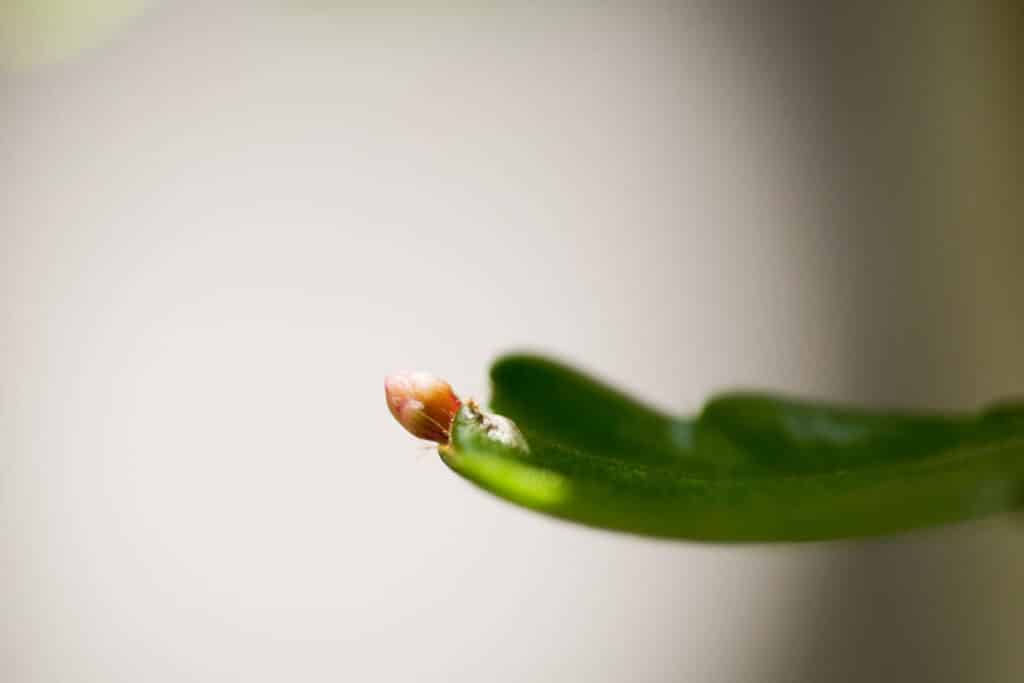
Moving a Christmas or Thanksgiving cactus can also cause the buds to drop. It’s best to get the cacti in its ideal location before blooms begin to form.
Bud drop is unfortunate, but if you make changes to your plant’s care before the following season, you should be able to recover the flowers during the next bloom cycle.
The Fix: Adopt a proper watering schedule and avoid moving your plant when it’s in bloom.
6. Leaves Turning Purple
There are several reasons leaves can turn purple:
- Lack of light. If you are growing your cacti in a low light area, it may protest and turn it’s beautiful green foliage shades of purple. Alternatively, too much light can also cause this problem! Use bright, indirect, diffused light for your cactus. Think of the plant’s natural growing environment: it thrives in the diffused light found beneath a jungle canopy of other plants.
- Cold temperatures: We have found that chilly temps can cause the leaves to turn purple. Keep your plant in warm temperatures between 65 and 70 degrees Fahrenheit. Avoid cooler temperatures and extreme fluctuations in temps whenever possible.
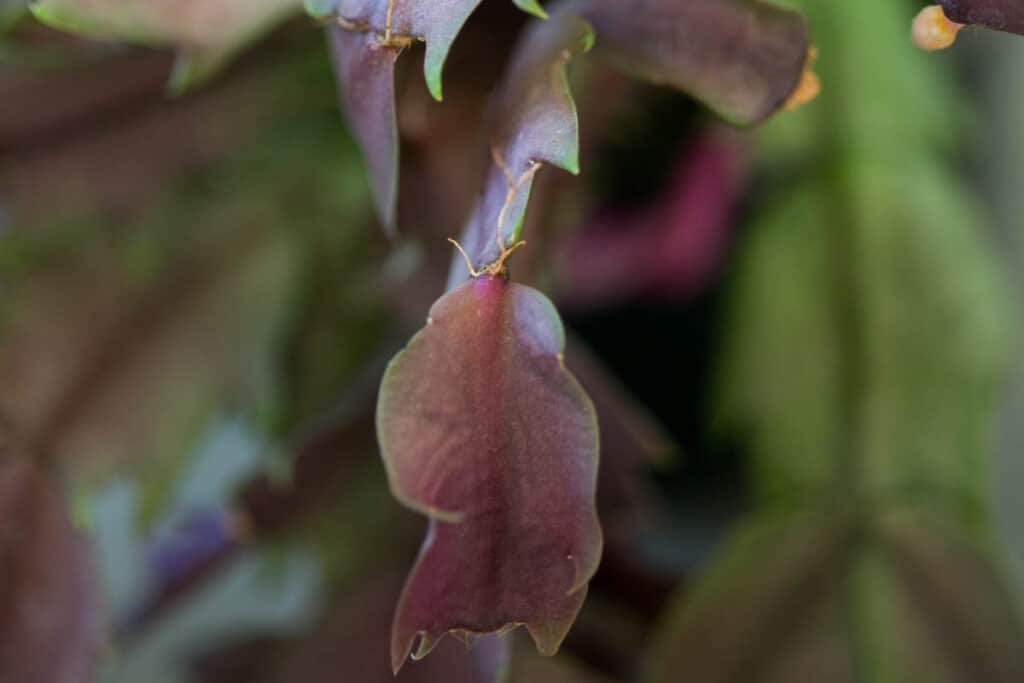
- Lack of water. When a plant does not get enough water, it may become stressed, and the leaves will turn purple or purple-ish red.
- Lack of Nutrients: Holiday cacti are continually given a rich supply of nutrients from the detritus around them in their natural environment. There are only so many nutrients in the potting mix, and these nutrients eventually get depleted. This poor soil can lead to leaf discoloration. Fertilize your plant every spring and upgrade the cacti to a bigger pot and fresh soil every 3-5 years.
7. Blooming In October (Early Blooms)
You may find yourself in the middle of autumn wondering, why is my Christmas cactus is blooming early?!
The first thing to investigate for early blooms is what type of cactus you truly have. Christmas cacti are often marketed as Thanksgiving cacti. Though they are similar, they are two distinct members of the Schlumberger family.
If you have picked up a “Christmas cactus” from a big box store, nursery, or grocery store, chances are it’s a Thanksgiving cactus. It can be a challenge to find a true Christmas cactus!

Thus, it may bloom early- even in October, but usually in November.
The leaf shape is the easiest way to tell the difference between the two plants. Learn more about the distinct characteristics between the two cacti here.
The other reason a Christmas cactus may bloom early is simply because of your plant’s specific environment. Daylight, humidity, and temperature are different all over the world!
The particular micro-climate in which you live will affect the bloom time.
The best approach to early blooms is to try to embrace the flowering process whenever it comes. While it’s a treat to have the plant bloom right at Christmas, this isn’t always possible.
8. Christmas Cactus Not Blooming
Late or early blooming can be disappointing, but not nearly as bad as a holiday cactus that doesn’t bloom at all! A lack of blooms guarantees heartache for a die-hard Christmas cactus fan.
The most likely reason that a cactus fails to bloom is the growing environment it lives in. The plant must have specific growing conditions in the fall, including colder temps and shorter hours of daylight.

The cacti must have the following conditions met to set it’s buds:
- 12-14 hours of darkness every day, 6-8 weeks in the fall
- These extended hours of darkness should be joined with cooler temperatures, around 55-60 degrees Fahrenheit at night
These two specific environmental conditions should stimulate your plant to produce blooms. Referred to as short-day plants, they rely on these shorter daylight times as their cue to set their buds!
Many times, this happens naturally in your home. The bloom development may be stunted if your plant is in a hot area with long hours of artificial daylight.
The Fix: Make sure your plant receives the right ratio of light to dark + cool evening temperatures. Add fertilizer in late spring for an extra bloom boost.
9. Spider Mites
Spider mites are a common pest on houseplants and they can infest holiday cactus as well.
While a small infestation is harmless, the bugs will eventually damage the leaves as they suck the juice from the leaf cell.
The Fix: Keep mites under control by treating them at first site. Thoroughly wash the spider mites off the plant, then treat with insecticidal soap.
10. Yellow Leaves
Spider mites can cause yet another problem for our beloved cacti- yellowing leaves! The damage to the plant leaves can cause this discoloration.
Other culprits of yellowing leaves: too much direct sunlight, lack of water, or soil that is lacking in nutrients.

The Fix: Trouble shoot what is causing your plant’s leaves to go yellow. Is it poor soil? Mites? Or bad lighting?
How To Care For Christmas Cactus To Prevent Problems
The best way to prevent problems with your holiday cactus is by giving it excellent care upfront- before the problems develop!
You can read our compete guides on caring for Christmas cacti (here) and Thanksgiving cactus (here).
As a quick refresher, here’s how to care for your plants so they thrive:
- Give your plants a loose, well-draining soil medium that is slightly acidic and full of nutrients.
- Lighting: Avoid too much direct sunlight and opt for bright, indirect light for your cacti. Remember the natural habitat is full of diffused light, look for similar lighting conditions in your home!
- Don’t overwater or underwater your plant- check the soil for dryness prior to watering
- Humidity! As tropical plants, give these cacti moderately high humidity levels of 50-60%.

With their vibrant flowers in early winter, Christmas cacti are a joy to grow! But like all houseplants, these beauties are susceptible to disease.
The best way to prevent problems is to keep a close eye on your plant throughout the year, giving it proper water, soil, light, and humidity.
Most problems are caused by over-watering, so make sure to soak your plant and then let it dry until the top layers of soil are dry!
Please leave comments below if you have any questions or concerns. I read and respond to each one, and I love hearing from you!

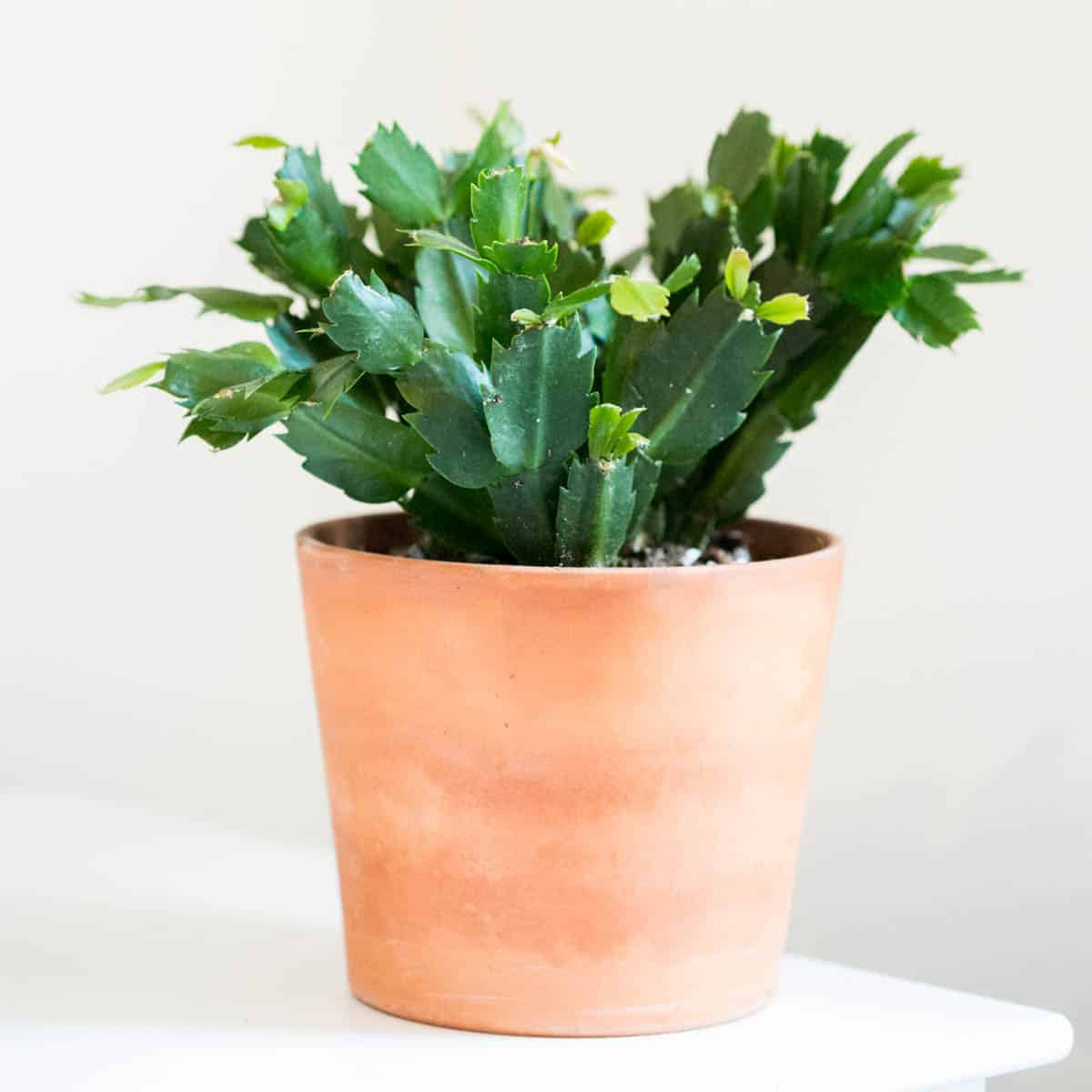

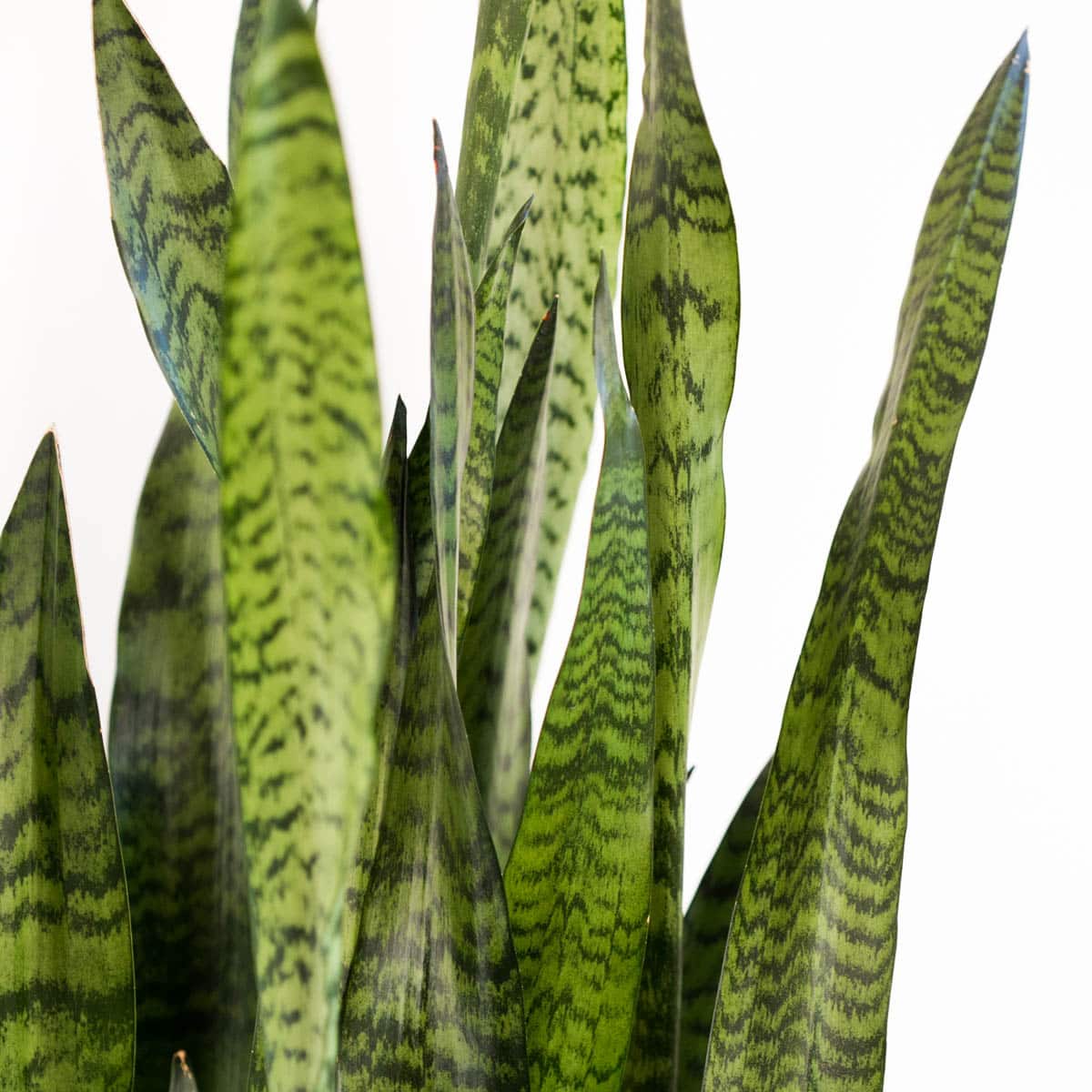



Our Christmas cactus has blooms but they fall off and with these suggestions I hope to get it to produce flowers. She is nice and green and growing just no flowers and she is two years old.
Hi Glen! I am glad to hear your plant is healthy. Have you tried fertilizing in the spring?
I have had my Christmas cacti for years it is hanging over. But have noticed half the plant is growing roots on most leaves. And the big near the soil is brown. But that’s because it’s old. The other half is looking fine. But still brown at the soil level. It’s a shame if I loose this. Was a cutting off my moms. Going to split at the soil/ roots fingers crossed it works.
[email protected]
Hi Victoria! I hope you do not lose your plant either! I would definitely take some cuttings and propagate them so you have backup plants: https://greengardencottage.com/how-to-propagate-christmas-cactus/ yes, definitely re pot the plant with new soil. That may really help!
My Christmas cactus is a beautiful plant but has not bloomed in several years
Everything I read in this and many other articles I have abided by but still no blooms
I would love to see blooms again
Any help would be greatly appreciated
Hi Brenda! Okay, I’d love to help you troubleshoot. Can you send me an email to [email protected] with a photo of your cactus, and let me know the lighting, temperature and if you know the relative humidity? It’s also a good idea to check the soil- when is the last time it was updated, and are you fertilizing? Thank you!
My cacti has droopy leaves, they starting to get buds after moved them from evening sunlight to morning sun. Still want to know why leaves so droopy
Hi Mari!
Drooping leaves can be a sign of over watering. Shriveled leaves mean that the plant is under watered. Christmas cactus leaves do cascade downward in their natural appearance, as well.
My Christmas Cactus keeps drooping leaves
Hi Christine! Drooping leaves can be a sign of over watering. Shriveled leaves mean that the plant is under watered. Christmas cactus leaves do cascade downward in their natural appearance, as well.
By the shape of the leaves, mine is a Thanksgiving cactus with white blossoms…never have seen white one before and wondered if it was an anomaly.
Hi Irene! I found a Thanksgiving cactus with white blooms this year as well. They are so beautiful!
My Thanksgiving cactus is blooming now….. January; I did repot last year and it did revolt – purple leaves, dead leaves, etc. I always put it in a closet in October for 4 weeks. I think I underwatered it
Hi Susie! Have you seen our watering guide? Be sure to check it out here: https://greengardencottage.com/how-often-to-water-christmas-cactus/
Learned accidentally how to make a Christmas cactus bloom for many months, not just one or so – if it’s sitting in front of a window with more sun shining on the leaves on the part of the plant nearest the window glass, less on the rest of the plant. Just give the pot around 1/4 of a 360 degree turn every three months or so. A new set of flower buds will begin to form on the leaves now nearest the window, then will continue growing, then bloom, after that part of the plant is turned further, then further, from the bright light, while a new set of flower buds will begin to form on the leaves now nearest the brighter light, nearest the window panes. And continue growing, then bloom, after that part of the plant is turned further away from the window panes. Etc.
That is very interesting Ricardo thank you for sharing! It would be so much fun to have a plant bloom for several months at a time. Thank you so much for stopping by and leaving that tip for everyone.
Thank you so much for explaining that, Ricardo. It makes a lot if sense!
Can you recommend good pots for these plants? Also I thikk few leaves of my plant looks kind of purplish. I was told not to worry? How long can a christmas cactus go without water in the winter? I just watered my plant when it was only surface level dry. My mom grew a small sizes christmas cactus really erll but for some reason they beginning to die by my hands. I dont have a green thumb it seems
Hi Taybah! You can use terra cotta, ceramic or plastic with these plants. Make sure your container has drainage holes on the bottom of the pot. In winter water when the soil is dry a few inches down. You may want to check out our article on watering here: https://greengardencottage.com/how-often-to-water-christmas-cactus/
I mistakenly misread direction on the bottle and gave my cactus as double dose of fertilizer. I realized what I did and ran water through the plant. It became a non flowering plant and the leaves are smaller and a few large stems from the center just fell off. Will this plant recover?
Hi Sharon! You know to be honest I do not know if your plant will recover as there are many factors that affect each plant. If I were you I would take some cuttings and propagate some new plants (if the cuttings are healthy enough). I may also try to change the soil and see if that helps! https://greengardencottage.com/how-to-propagate-christmas-cactus/
I have a Thanksgiving cactus. I gets beautiful blooms every year. However about 1/3 of the buds, never bloom. I watch & wait, but they eventually dry up & fall off. Any thoughts? Is this normal? Can it be remedied?
Thank you, Jamie Saechao, for those well written words of wisdom. I’ve never heard your tip about the custom plant mix and feeling 2 inches deep to see if the soil is dry.
Custom plant mix really worked wonders for a bromiliad I had a while back, which gave me 31 offspring without using fertilizer before dying. I remember thinking perlite was a waste of money. It wasn’t!
Hi Jean! Thank you so much for sharing that! Yes, some of the add ins seem slightly frivolous but many of them do help! Thank you for stopping by and for your kind comments. 🙂
How am I supposed to move a cactus to a dark closet nightly in the wintertime with it getting stressed cause I’m moving it around daily?
Hi Diana! Here are a few options: you can place a dark pillow case or bag over your cacti in the evenings to ensure it gets enough hours of darkness, or you can carefully move your plant into a dark area in the evening until the buds begin to set. Once the buds are set, stop moving the cacti so you do not disturb the plant. Remember, if your plant already gets at least 12 hours of darkness in the location it is in, you do not need to move it. I hope this helps clarify.
Christmas cactus I have had one for many years, it does not bloom all the time only one year, and another year nothing. I love this plant, in December 2023, it bloomed a lot.
Hi Elba! That is interesting! There are so many different environmental factors that can affect our plants. Praying you get more blooms this year.